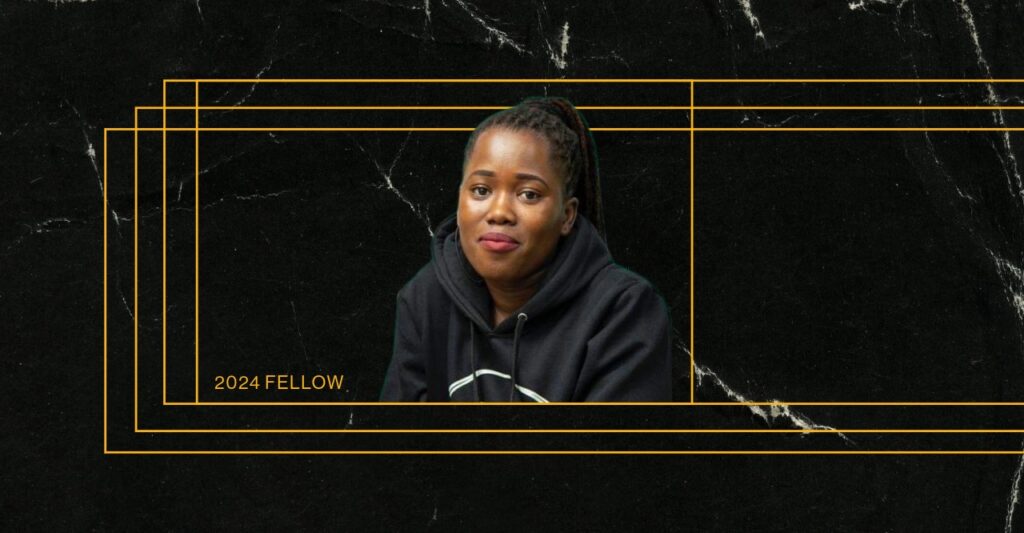All science writers operate at the intersection of scientific inquiry and the written word, but Jyoti Madhusoodanan was literally born there. The daughter of a father who was an organic chemist and a mother who was an English teacher, she remembers being equally drawn to both the sciences and the humanities as a child — often dividing her playtime between molecular model kits and the volumes of Shakespeare, Tennyson, and other literary greats that crowded her mother’s bookshelves.
Today, those twin interests have helped Madhusoodanan forge a freelance career covering chemistry, bioethics, life sciences, STEM careers, and other topics for outlets like The New York Times, Nature, and NPR. This year, as a Knight Science Journalism Project Fellow, she’ll put that experience and expertise to work with a project investigating the use, and misuse, of racial categories in healthcare. The project exemplifies principles and values that have guided Madhusoodanan throughout her career: Whether she’s telling a story about the role of microglial protein trafficking in neurodegenerative disorders or the pernicious effects of systemic racial bias, her work is rooted in a genuine concern for people and driven by a deep curiosity about the world around her.
That’s been the case ever since Madhusoodanan took her very first freelance assignment, a piece about kids’ summer camps that she wrote for a local edition of The Times of India while living in the city of Ahmedabad, in the western Indian state of Gujarat. Madhusoodanan, a 19-year-old undergraduate student at the time, had recently moved to the area from New Delhi. She didn’t speak the local language, and she didn’t know the city very well. Before that first assignment, she would have found it hard to imagine walking up to strangers and peppering them with questions. But the reporting process imbued her with a sense of fearlessness that changed everything.
“Saying that I was reporting the story, it was a way to engage with this new place,” Madhusoodanan recalls. “I was also absolutely amazed at the responses, because the minute people found out they were going to be in the newspaper, they just wanted to talk.” Journalism had given her entrée into the strange and unfamiliar city that she would soon come to think of as home. It gave her the permission to ask questions, to go places, and to meet people that she never would have met otherwise.
Madhusoodanan would go on to complete one or two additional assignments for the paper before finishing her undergraduate degree in biochemistry. She remained in Gujarat to earn a master’s degree in biochemistry, and then moved to upstate New York to undertake Ph.D. studies in biomedical sciences at SUNY Buffalo. However, she soon realized that, for her, the thrill of producing research papers could not compare with the sense of purpose and possibility that she had felt working as a writer and reporter. So after completing her Ph.D., she tested the waters in a few science writing jobs and eventually landed at the University of California Santa Cruz, where she graduated in 2014 with a masters’ degree in science communication. She’s been building a thriving career as a freelance science journalist ever since.
As a Knight Science Journalism Project Fellow, Madhusoodanan plans to investigate the use of race-based scoring in healthcare. She first became interested in the topic a few years ago while researching metformin, a drug used to control blood sugar levels in patients with diabetes. To assess whether a patient is at risk for kidney-related side effects from metformin, physicians commonly use what’s known as an estimated glomerular filtration rate (eGFR) — a measure of kidney function that is typically determined by detecting creatinine levels in a patient’s blood and then adjusting for factors like age, gender, and race. The race component, however, considers only whether a patient identifies as Black or non-Black, under the dubious assumption that Black people uniformly possess higher-than-average muscle mass and therefore naturally produce more creatinine. For an ailing patient, that race adjustment can spell the difference between receiving a kidney transplant and having to go without. More generally, it could be contributing to an underdiagnosis of chronic kidney disease in Black Americans.
Madhusoodanan notes that eGFR is far from the only medical test to include such race-based scoring. “The race categories used in these calculators are census categories and they were never meant to be used to study or analyze scientific data,” she says. Rather, race data in clinical studies were originally collected to ensure that sample groups reflected the demographics of society at large. “It’s almost circular,” Madhusoodanan says, “to go back into that [data] and say, ‘OK, we’re representing all these people, let’s find out what’s different about them.’”
Madhusoodanan’s fellowship project — informed by years of reporting, a concern for human well-being, and her own experience as a woman of color now living in the U.S. — is very much of a piece with her broader approach to journalism. For her, journalism isn’t just about reporting on what’s new; it’s also about questioning deep-rooted assumptions and learning to see the familiar in unfamiliar ways. Madhusoodanan still remembers a piece of advice she received early in her career from current KSJ director Deborah Blum. “One of the things she told me that really resonated and helped me feel like I was on the right path was to ‘be a tourist,’” Madhusoodanan recalls. “She just said ‘be a tourist in your own home,’ which is what drew me to journalism in the first place. And it made me feel like, yes, this is the profession that’s going to let me do that.”





Leave a Reply